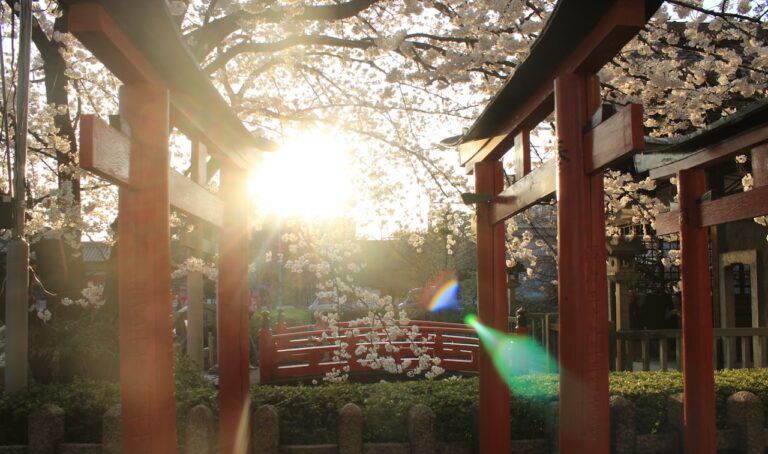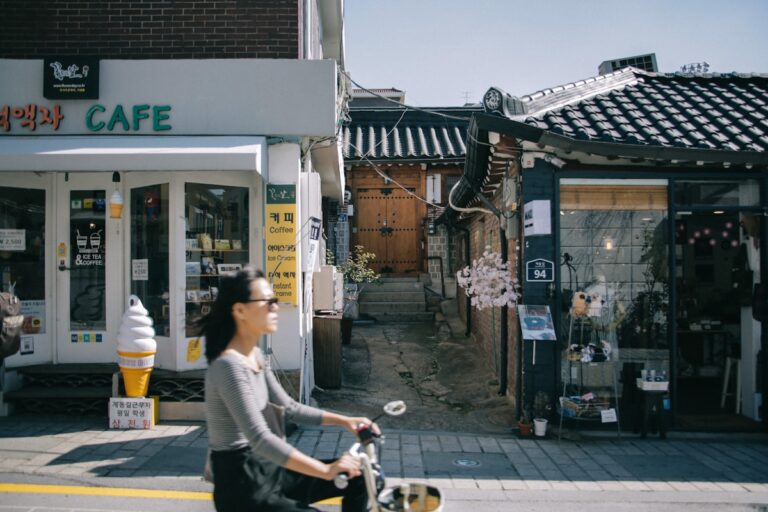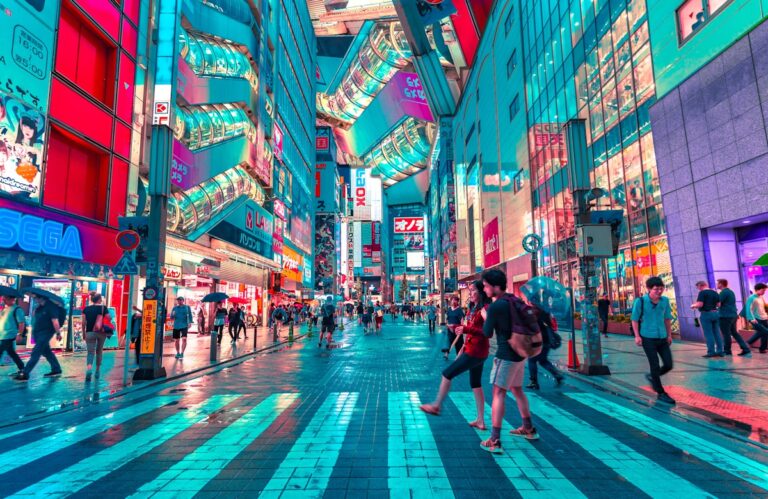How to Get Around Seoul
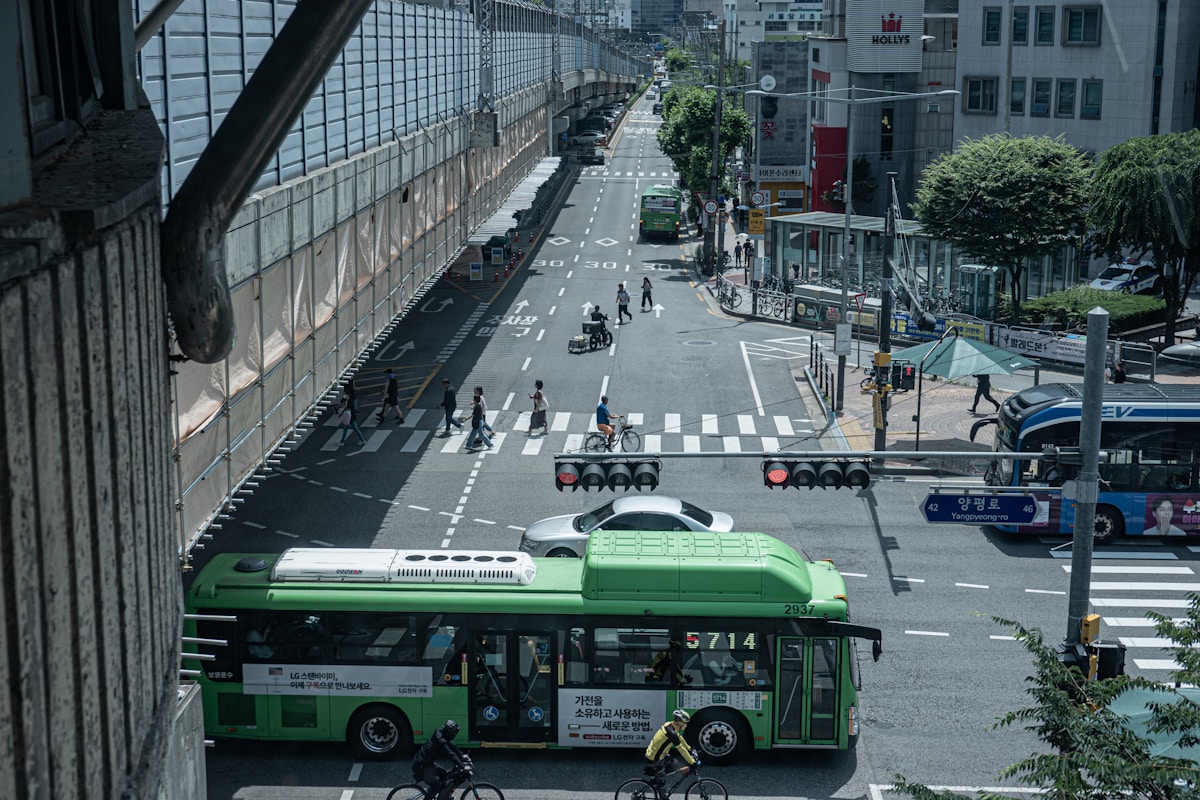
Seoul presents a model of urban mobility excellence. Visitors encounter a transportation network renowned for its efficiency, cleanliness, and thorough coverage.
The sprawling metropolis offers multiple transit options, from an extensive subway system to color-coded buses and readily available taxis.
Navigation tools and payment cards simplify the experience for foreigners unfamiliar with Korean language and customs.
The question remains: which transportation method best suits each traveler’s needs and destinations?
Key Takeaways:
Hide- Use Seoul's extensive subway system with color-coded lines and English signage for efficient city-wide travel 🚇
- Purchase a T-Money card for seamless transfers between subways and buses within a 30-minute window 💳
- Navigate with transportation apps like Kakao Maps or Naver Maps that provide real-time updates and route planning 📱
- Group destinations by subway line or geographic proximity to minimize transfer time and maximize sightseeing efficiency 🗺️
- Consider taxis or the International Taxi service with English-speaking drivers when public transportation is unavailable 🚖
Understanding Transportation in Seoul
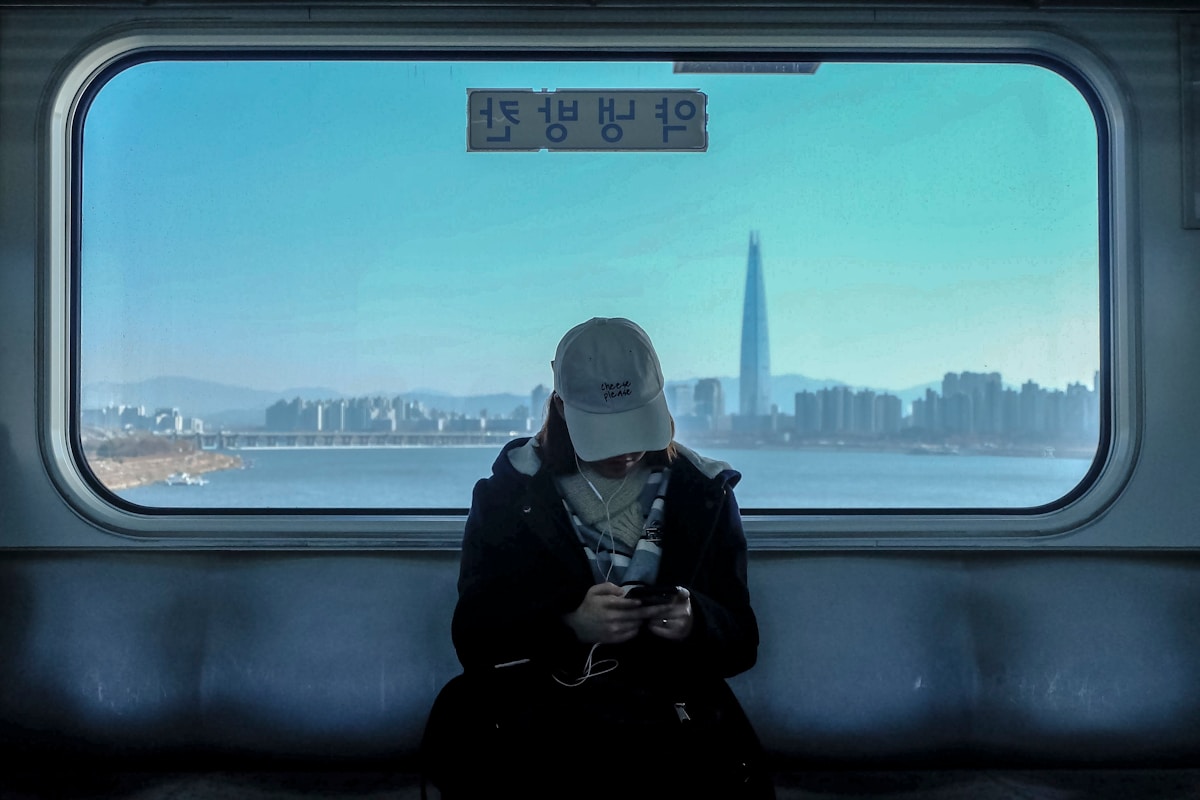
Seoul boasts one of the world’s most efficient public transportation systems, encompassing an extensive network of subways, buses, and taxis that seamlessly connect every corner of the sprawling metropolis.
The city’s infrastructure is remarkably user-friendly for foreigners, with signage in multiple languages, color-coded subway lines, and affordable transit options that operate from early morning until midnight.
Read More: Top Things to do in Seoul
Despite its massive size, Seoul’s all-encompassing transportation network transforms what could be an overwhelming urban landscape into a navigable environment where travelers can move between ancient palaces and futuristic skyscrapers with remarkable ease.
What Is Seoul Like for Getting Around?
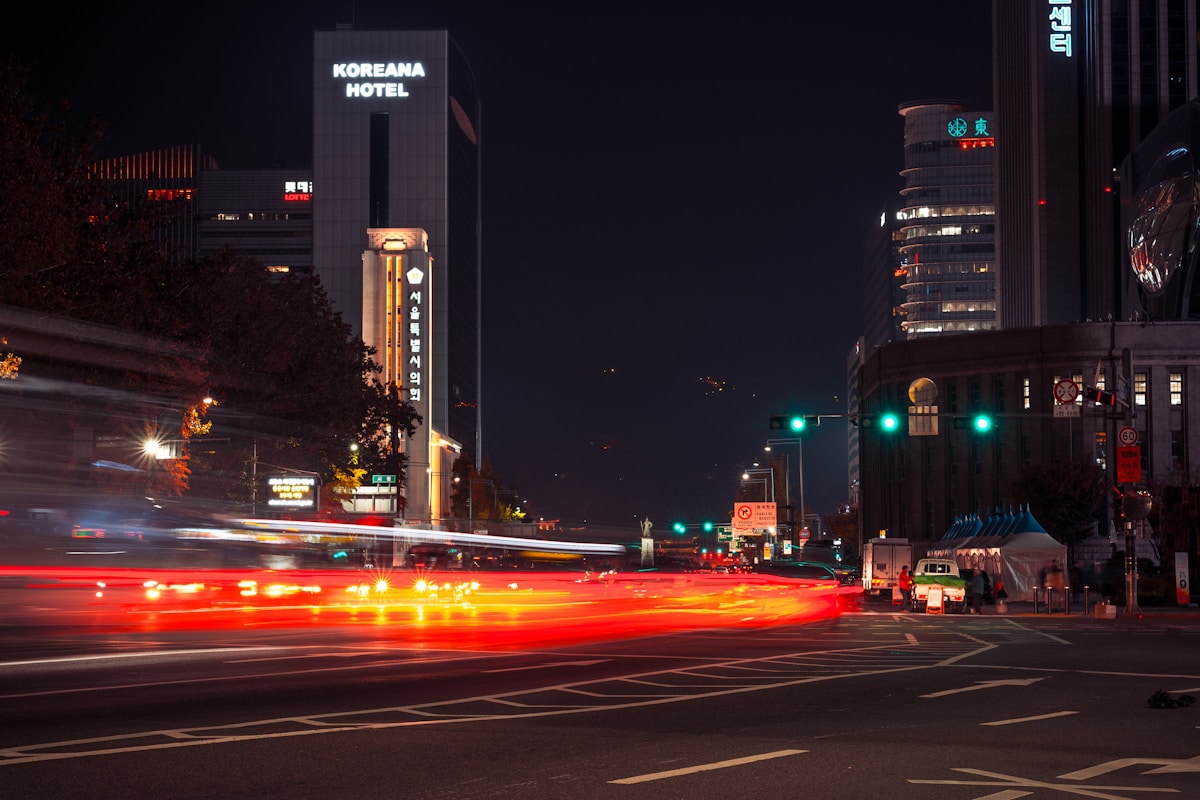
Seoul’s intricate transportation network seamlessly interweaves extensive subway lines, efficient bus routes, and pedestrian-friendly streets that collectively form one of Asia’s most navigable metropolitan landscapes.
Visitors can traverse the sprawling capital through a combination of the remarkably clean subway system, color-coded buses, abundant taxis, or simply by walking through neighborhoods designed with accessibility in mind.
Planning daily travel in Seoul requires understanding transportation cards, peak hours, and strategic route combinations that maximize efficiency while minimizing transit time.
1. Public Transport, Walking, and Other Options
Traveling through one of Asia’s most dynamic metropolises becomes remarkably manageable thanks to an extensive, efficient, and affordable transportation network that connects every corner of the city.
Seoul’s primary mobility options include:
- Seoul subway system – clean, punctual, and equipped with English signage
- Seoul public transportation buses – color-coded by service type
- Walking – surprisingly viable despite the sprawl, with pedestrian-friendly districts
Transportation in Seoul empowers visitors with independence.
2. How to Plan Your Daily Travel Efficiently
When planning daily travel through this vast metropolis, visitors quickly discover that Seoul offers a remarkably efficient transportation infrastructure that rewards strategic thinking.
Grouping destinations by subway line minimizes transfer time, while the Seoul transportation app provides real-time updates.
Getting around Seoul becomes effortless when travelers embrace the Seoul subway system and plan activities geographically rather than chronologically.
Using the Seoul Subway System
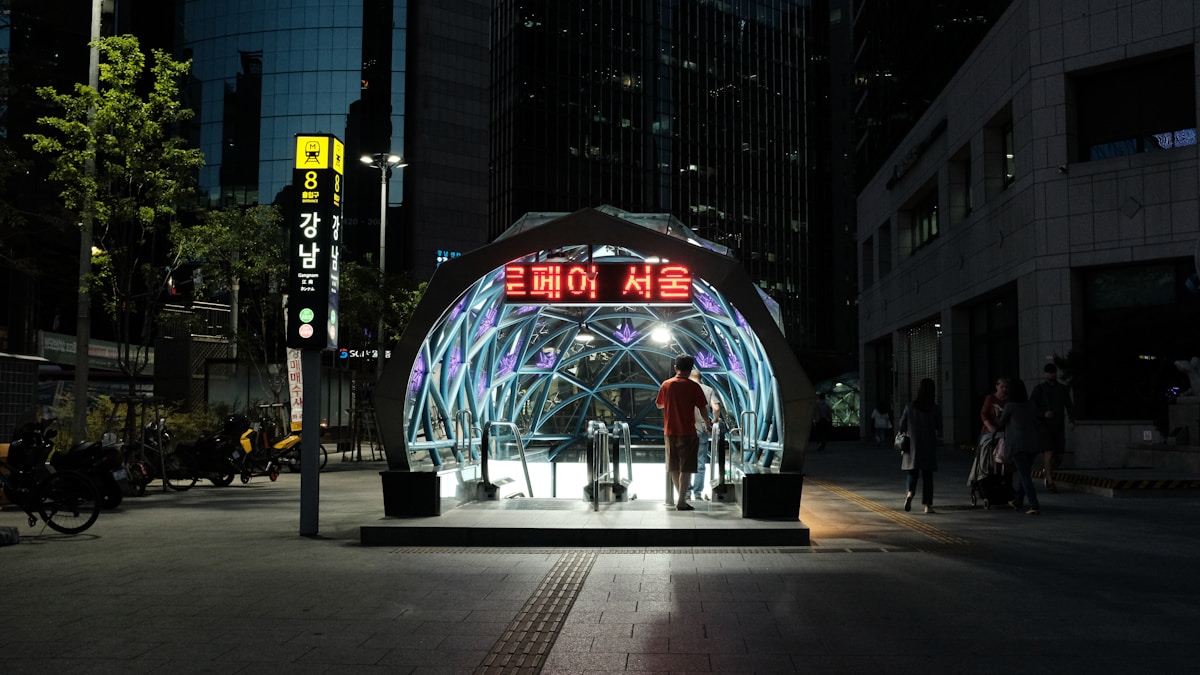
Seoul’s extensive subway network forms the backbone of the city’s transportation system, offering tourists and locals alike an efficient way to navigate the metropolis.
Mastering the T-Money card, a rechargeable transit card accepted on subways, buses, and even in convenience stores, streamlines the travel experience and eliminates the hassle of purchasing single-journey tickets.
Blending in with Seoul’s subway culture requires observing a few essential customs: offering seats to the elderly, refraining from loud conversations, and following the orderly queuing system that keeps millions of daily commuters moving smoothly.
How to Use the Seoul Metro for Easy Travel

The Seoul Metro’s extensive network connects all corners of the city through fifteen color-coded lines, each with distinctive transfer stations marked clearly on maps.
Understanding the subway map requires attention to both Korean and English signage, with line numbers, terminal stations, and transfer points highlighted for quick navigation.
Travelers can effectively plan routes by identifying the nearest stations to their destinations, calculating the number of transfers needed, and noting the direction of travel based on the terminal station names displayed on platform signs.
1. Understanding the Subway Lines and Transfer Stations
Maneuvering Seoul’s extensive subway system becomes markedly easier once travelers understand the color-coded lines and strategic transfer stations that form the backbone of this efficient transportation network. The Seoul Metro offers:
- Nine color-coded subway lines connecting key destinations from Seoul Station to Myeongdong.
- Strategic transfer hubs where multiple train lines intersect, allowing seamless movement.
- English signage throughout the metro Seoul network for international navigation.
2. How to Read the Subway Map and Plan Routes
Maneuvering through Seoul’s labyrinthine subway system becomes considerably more manageable when travelers master the art of reading the detailed subway map and planning efficient routes.
The color-coded lines and bilingual station names make navigation intuitive even for foreigners wondering does Seoul have Uber.
While Uber in Seoul exists in limited form, the thorough subway remains the most efficient transportation method.
Station exits are numbered, corresponding to specific landmarks above ground.
Buying and Using a T-Money Card
T-Money cards, Seoul’s essential travel smartcard, can be purchased at any subway station, convenience stores like 7-Eleven and GS25, or tourist information centers throughout the city.
These rechargeable cards offer travelers a 100 won discount per trip compared to single-use tickets, while eliminating the need to purchase individual tickets for each journey.
Beyond cost savings, T-Money cards enable seamless transfers between subway lines and buses within a 30-minute window, making them indispensable for efficient navigation of Seoul’s vast transportation network.
1. Where to Purchase and Recharge a T-Money Card
When planning to navigate Seoul’s extensive subway system, purchasing a T-Money card should be your first priority.
This rechargeable travel card liberates visitors from Seoul’s size, a sprawling metropolis where Uber alternatives are preferable. Cards can be obtained at:
- Convenience stores (GS25, CU, 7-Eleven)
- Subway station vending machines
- Tourist information centers
2. Benefits of Using a T-Money Card Over Single Tickets
Although single-journey tickets remain available throughout Seoul’s transit network, the T-Money card offers significant advantages that transform the travel experience.
Users enjoy discounted fares, seamless transfers between subway and buses, and elimination of ticket booth queues.
The card enables swift tap-and-go entry, detailed journey tracking, and extends beyond transit to convenience stores and taxis, creating unparalleled mobility freedom throughout the metropolis.
Tips for Riding the Subway Like a Local
Maneuvering Seoul’s subway system during peak hours (7-9am and 5-7pm) can transform an otherwise pleasant journey into a challenging ordeal, making mid-day or evening travel notably more comfortable for visitors.
Courtesy seating, marked by distinctive colors, is reserved for elderly, pregnant, or disabled passengers, a cultural norm that locals strictly observe and expect tourists to respect.
When standing, passengers typically maintain silence, avoid eating, and hold handrails with one hand while keeping their belongings secure, small but vital behaviors that distinguish seasoned commuters from newcomers.
1. Rush Hour Times to Avoid and Best Travel Hours
To truly experience Seoul’s subway system like a local, understanding rush hour patterns is essential. Seoul’s crowded transit system rewards strategic timing:
- Morning Rush: Avoid 7:30-9:00am when business commuters flood stations
- Evening Crunch: Skip 5:30-7:30pm when exhausted workers head home
- Golden Hours: Travel between 10am-4pm for breathing room and relaxed journeys
2. Courtesy Seating and Other Etiquette
Mastering Seoul’s subway timing is one step toward blending in, but understanding the unspoken social code is equally important.
Designated pink or purple seats are reserved for elderly, pregnant women, and disabled passengers.
Locals avoid loud conversations, eating aromatic food, or playing media without headphones.
When trains get crowded, remove backpacks and yield to those who need seats, even without verbal requests.
Getting Around Seoul by Bus

Seoul’s extensive bus system complements the subway with color-coded routes that connect even the most remote corners of the city.
Visitors can pay bus fares using the same T-money or Cashbee cards accepted on the subway, with transfers between buses and subway lines available within a 30-minute window.
The green city buses and blue main line buses offer tourists convenient access to major attractions, while the Seoul City Tour Bus provides a hop-on-hop-off service specifically designed for sightseeing.
Understanding Seoul’s Bus Routes
Seoul’s bus system operates with color-coded vehicles, blue (main city routes), green (neighborhood connectors), red (express to suburbs), and yellow (circular downtown routes), each serving distinct areas and passenger needs.
Bus numbers further specify destinations, with the first digit often indicating the district or direction of travel, while digital displays at stops show real-time arrival information in both Korean and English.
Tourists can confidently navigate the extensive network by downloading the Seoul bus app or using Naver Maps, which provides thorough route planning with transfer suggestions and walking directions to the nearest stops.
1. Types of Buses and Where They Operate
Buses in Seoul operate on a color-coded system that efficiently connects every corner of the sprawling metropolis.
Each hue serves a distinct purpose in this intricate transportation ecosystem:
- Blue buses cruise main arterial roads, connecting districts across Seoul.
- Green buses link neighborhoods to subway stations within specific districts.
- Red express buses connect Seoul to satellite cities, offering commuters swift passage.
2. How to Identify the Right Bus for Your Destination
While the color-coded system creates a logical foundation for Seoul’s public transit, traversing the vast network of over 700 bus routes requires specific knowledge and tools.
Bus numbers prominently displayed in Korean and English reveal both type and destination.
Digital displays at stops show arrival times, while apps like Kakao Metro and Naver Maps provide real-time navigation in English, empowering travelers to confidently navigate Seoul’s expansive terrain.
How to Pay for Bus Fares in Seoul
Paying for bus fares in Seoul offers convenient options for both locals and tourists alike.
The T-Money card stands as the most efficient payment method, allowing seamless transfers between buses and subways while offering slight discounts compared to cash payments.
Travelers opting to pay with cash should note that exact change is required, as bus drivers do not provide change for larger bills.
1. Using a T-Money Card for Buses
A T-money card represents the most efficient payment method for traversing Seoul’s extensive bus network.
This rechargeable transportation card liberates travelers from fumbling for exact change and offers discounted transfers.
- Purchase at convenience stores for ₩4,000 plus deposit
- Tap the card reader when entering and exiting buses
- Reload at subway stations, convenience stores, or ATMs
2. Cash Payments and Exact Fare Requirements
Though T-money cards offer convenience, cash remains a viable payment option for Seoul’s buses. Passengers must deposit exact fare into the collection box upon boarding, as drivers cannot provide change.
Adult fares typically range from 1,300 to 2,400 won depending on the bus type and distance. This payment method, while straightforward, foregoes the discounts and free transfers that T-money card users enjoy.
Best Bus Routes for Tourists
Seoul’s intricate bus network offers tourists strategic routes that connect major attractions throughout the city.
The Seoul City Tour Bus provides a convenient hop-on, hop-off service with dedicated paths to cultural landmarks, historical sites, and shopping districts.
For independent travelers seeking authentic experiences, buses 401 and 402 circle central Seoul while routes 11 and 111 offer panoramic views along the Han River’s scenic corridors.
1. Popular Bus Routes for Sightseeing and Attractions
While many tourists default to the subway, Seoul’s extensive bus system offers unparalleled views of the city with routes specifically tailored for sightseeing.
The most panoramic routes include:
- Route 11 – circles Namsan Mountain, offering glimpses of N Seoul Tower
- Green Circulation Bus 02 – connects palaces, traditional markets, and Cheonggyecheon Stream
- Route 405 – traverses Gangnam’s glittering skyline and Han River parks
Taking Taxis and Ride-Hailing Services in Seoul
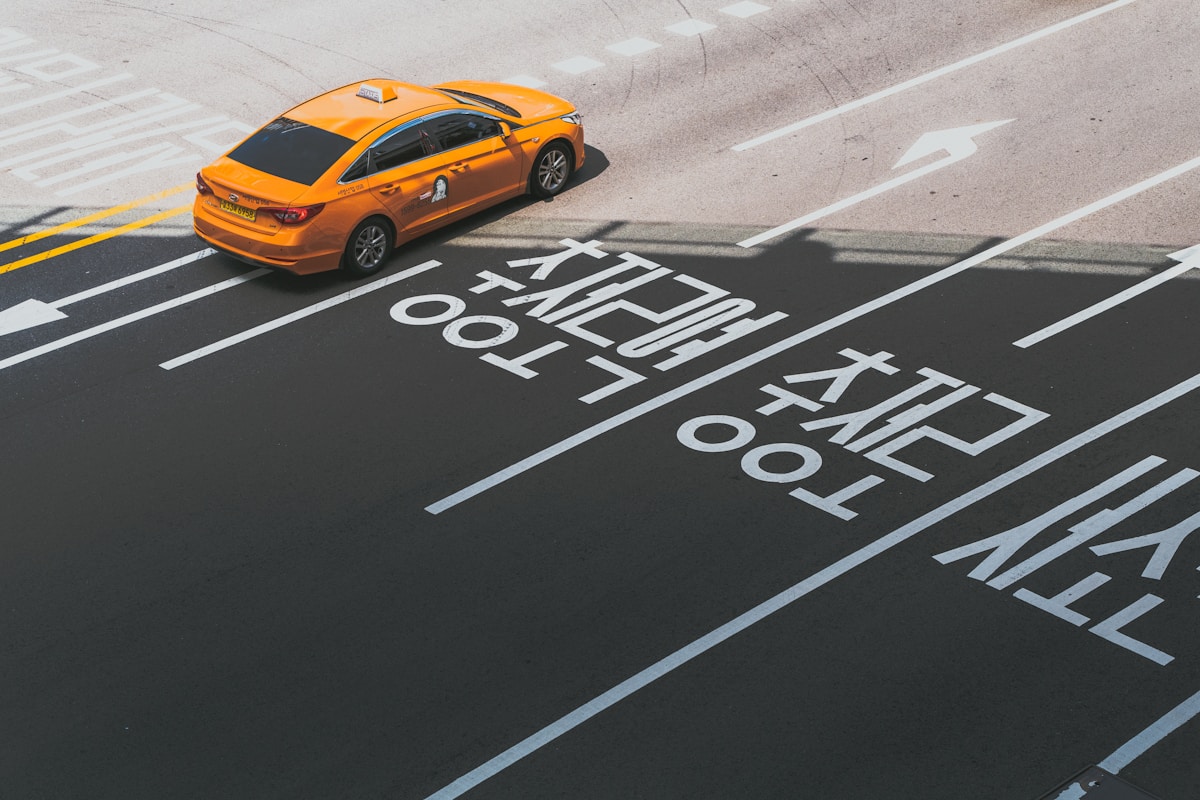
Taxis in Seoul offer convenient transportation when subway and bus services end late at night or when reaching locations with limited public transport access.
Visitors can easily hail traditional orange, silver, or black taxis from the street by waving a hand, or use popular ride-hailing apps like Kakao Taxi that provide English interfaces.
While slightly more expensive than public options, taxis provide door-to-door service with drivers who navigate Seoul’s complex streets efficiently, making them worth considering for tired tourists or those traveling with heavy luggage.
When to Use a Taxi Instead of Public Transport
Taxis in Seoul offer a compelling alternative to public transportation when traveling short distances with multiple people, as the shared fare often proves economical compared to individual subway tickets.
For longer journeys, regular blue or orange taxis provide affordable options, while black premium taxis with yellow “모범” (model) signs cater to those seeking enhanced comfort at approximately 30% higher rates.
Ride-hailing services like Kakao Taxi have revolutionized Seoul’s transportation landscape, allowing travelers to bypass language barriers through app-based booking while offering fare estimates before confirming rides.
1. Comparing Costs and Convenience for Short vs Long Trips
When deciding between taxis and public transportation in Seoul, cost-benefit analysis varies considerably between short and long journeys. For ideal transportation decisions:
- Short trips under 5km favor taxis, costing ₩4,800-6,000 versus multiple transfers and waiting time.
- Mid-range journeys (5-15km) balance with subway efficiency during rush hours.
- Long distances beyond 15km strongly favor public transport, saving ₩20,000+ per journey.
2. How to Identify a Regular vs Deluxe Taxi
Once travelers decide that taxis fit their journey requirements, the next step involves distinguishing between regular and deluxe options on Seoul’s streets.
Regular taxis are orange, silver, or white with a distinctive orange “TAXI” sign, starting at ₩3,800 base fare.
Deluxe “black taxis” feature premium black exteriors with yellow “DELUXE” signs, charging ₩6,500 initially but offering superior service and English-speaking drivers.
How to Hail a Taxi and Use Ride Apps
Hailing taxis in Seoul becomes effortless with the popular Kakao T app, which features an English interface and connects travelers to nearby available cabs with just a few taps.
Visitors can opt for specialized airport taxis that offer fixed-rate services, eliminating concerns about route inefficiencies or meter fluctuations during the journey to or from Incheon or Gimpo.
Beyond Kakao T, international travelers can also utilize familiar ride-hailing platforms that operate in Seoul, though local apps typically provide more extensive coverage and competitive pricing throughout the sprawling metropolis.
1. Using Kakao T and Other Taxi Apps for English Support
For travelers who don’t speak Korean, maneuvering Seoul’s taxi system can be intimidating, but several smartphone applications have revolutionized the experience.
- Kakao T offers full English interface with automatic translation for driver communication.
- T Map Taxi provides reliable fare estimates and international credit card support.
- TADA delivers premium rides with English-speaking drivers and transparent pricing.
2. Airport Taxis and Fixed-Rate Services
Arriving at Seoul’s airports opens travelers to specialized taxi services designed specifically for international visitors.
These include the International Taxi service with English-speaking drivers and fixed-rate airport limousines eliminating meter anxiety.
The distinctive orange deluxe taxis charge premium rates but offer superior service, while standard airport taxis follow metered fares plus highway tolls.
Exploring Seoul by Walking and Biking
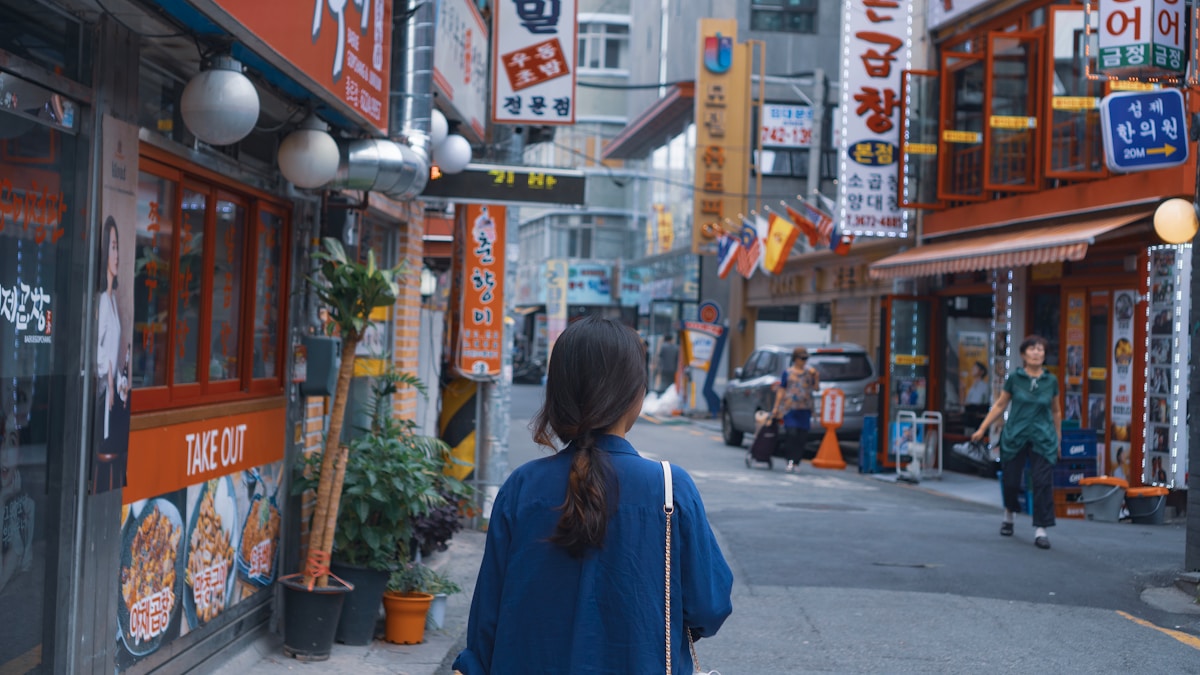
Seoul’s compact design and extensive pedestrian infrastructure make it an exceptionally walkable city, particularly in historic districts like Insadong and modern areas such as Gangnam.
Visitors can easily navigate between major attractions on foot, with clear signage in multiple languages and pedestrian-friendly streets that showcase the city’s blend of traditional and contemporary architecture.
For those seeking to cover more ground, Seoul’s public bike rental system offers an affordable alternative, with over 1,500 stations strategically positioned throughout the city.
This system allows riders to experience Seoul’s scenic Han River paths and efficiently access neighborhoods beyond walking distance.
Is Seoul a Walkable City?
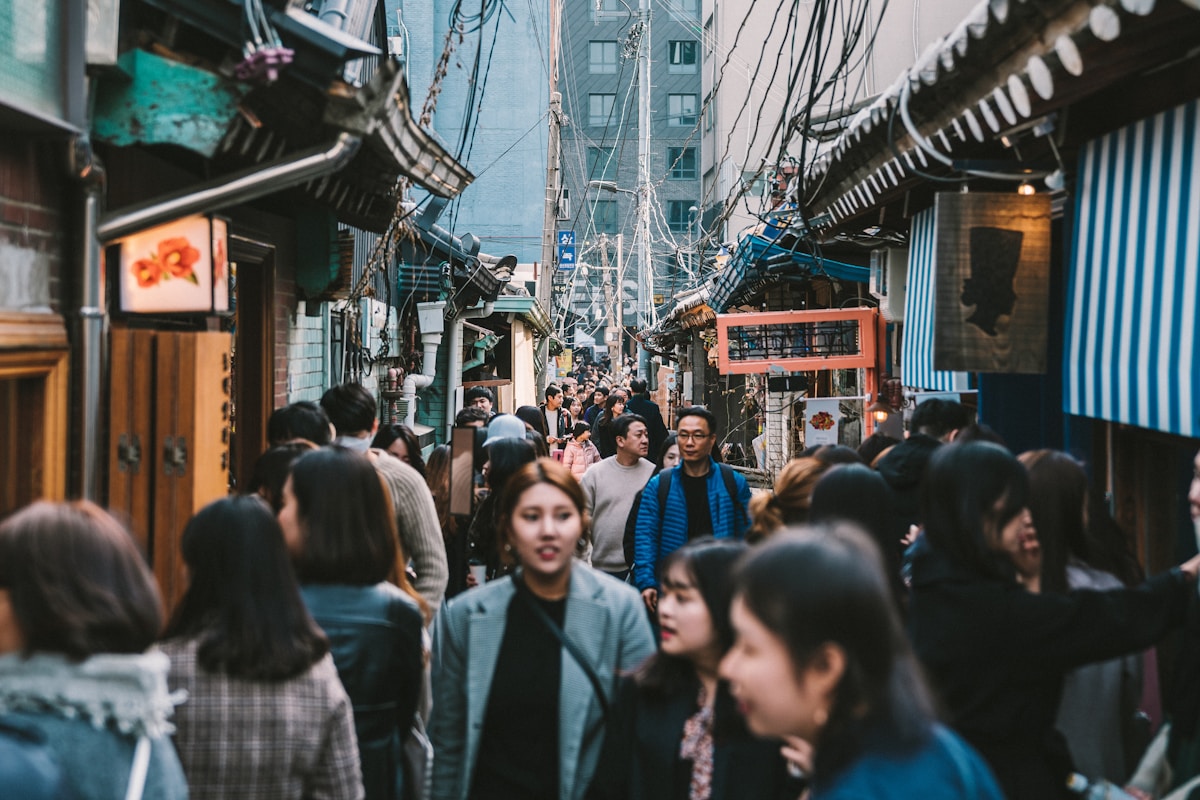
Seoul features numerous pedestrian-friendly districts like Insadong and Bukchon Hanok Village, where visitors can immerse themselves in both historic architecture and modern urban design along well-maintained pathways.
During rush hour or in congested areas such as Myeongdong, walking often proves faster than taking public transportation or taxis stuck in traffic.
The city’s continuous improvements to walking infrastructure, including the Cheonggyecheon Stream restoration and Seoul City Wall trail, offer not just practical transportation options but scenic experiences that reveal Seoul’s unique character.
1. Best Pedestrian-Friendly Areas and Scenic Walks
Wandering the streets by foot offers travelers the most intimate connection with a city’s pulse, and few Asian metropolises reward pedestrians quite like Seoul.
The capital showcases exceptional walking areas:
- Cheonggyecheon Stream’s 11km urban oasis
- Bukchon Hanok Village’s winding alleys between traditional Korean houses
- Seoullo 7017, an elevated linear park converted from a former highway overpass
2. When Walking Is Faster Than Public Transport
While Seoul’s public transportation system ranks among the world’s best, savvy travelers quickly discover numerous situations where their own two feet prove more efficient than trains or buses.
During rush hours, congested transfer stations like Gangnam or Jamsil can add 15+ minutes to journeys.
Short cross-neighborhood trips often take less time walking than waiting for connections, particularly in dense areas like Hongdae and Itaewon.
Renting a Bike for an Alternative Way to Travel
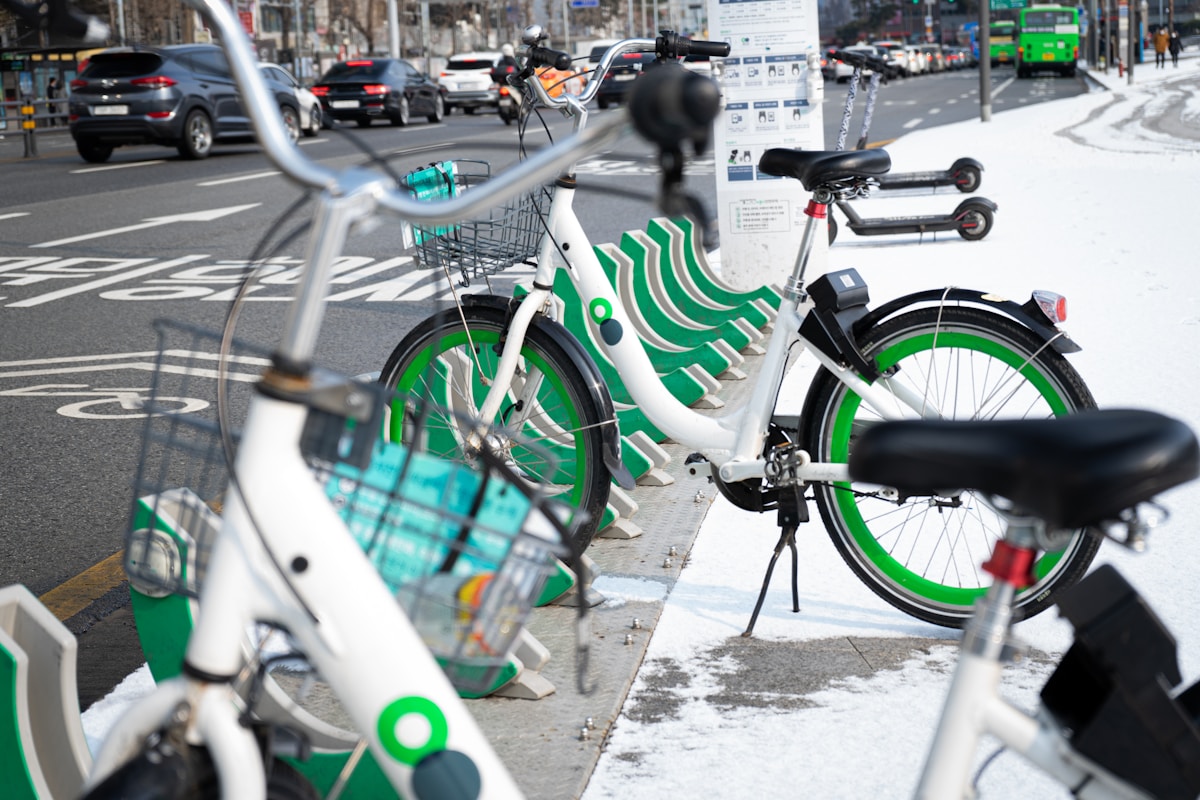
Seoul’s extensive bike-sharing system – Ddareungi, offers visitors an efficient and eco-friendly transportation alternative through its network of over 2,000 stations scattered across the city.
Renting these bright green bicycles requires only a simple smartphone application and minimal fee, granting riders access to Seoul’s thorough cycling infrastructure, including dedicated lanes and rest areas.
The Han River Park stands out as the crown jewel for cycling enthusiasts, featuring 40 kilometers of scenic, flat pathways that connect major attractions while offering breathtaking views of the city skyline and numerous spots for refreshment breaks.
1. How to Use Seoul’s Public Bike-Sharing Service (*Ddareungi*)
- Easy registration via smartphone app using credit card or T-Money card
- Hundreds of unmanned rental stations operating 24/7 across urban centers and Han River corridors
- Affordable hourly rates with significant discounts for longer-term passes
2. Best Routes for Cycling Along the Han River
The Han River, coursing through the heart of Seoul like a blue artery, offers some of the most spectacular cycling routes in Asia.
Cyclists favor the 69-kilometer path connecting Gayang Bridge to Paldang Dam for its uninterrupted riverside vistas.
The Yeouido Loop provides a shorter 8-kilometer circuit with cherry blossoms in spring, while Mangwon’s stretch features artistic installations and tranquil scenery.
Traveling From the Airport to the City
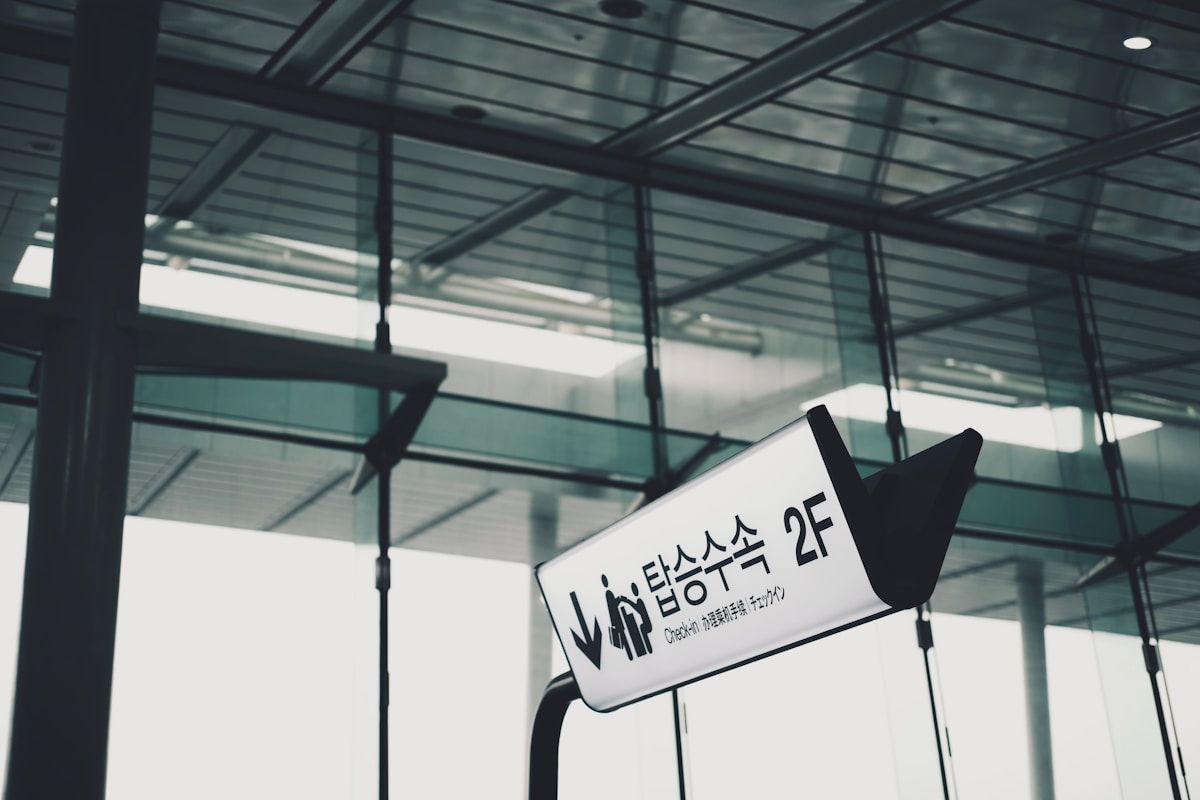
Visitors to Seoul face two primary entry points: Incheon International Airport, located 50 kilometers west of downtown, and the closer Gimpo Airport, which primarily serves domestic routes and select international flights.
From Incheon, travelers can choose between the efficient Airport Railroad Express (AREX), which reaches Seoul Station in under 45 minutes, luxurious limousine buses with multiple downtown stops, or taxis offering door-to-door convenience at premium rates.
Gimpo offers similarly convenient options with its dedicated subway line, airport buses, and taxi services that connect to central Seoul in roughly 20-30 minutes depending on traffic conditions.
Best Ways to Get From Incheon Airport to Seoul
Travelers arriving at Incheon Airport have several efficient options to reach Seoul’s bustling center.
The AREX train system offers both an Express service that reaches Seoul Station in 43 minutes without stops and an All-Stop Train that serves multiple stations along the route at a lower cost.
For those preferring door-to-door convenience with comfortable seating and luggage storage, Airport Limousine Buses connect directly to major hotels and neighborhoods throughout Seoul.
1. AREX Express Train vs All-Stop Train
When choosing rail options from Incheon International Airport to Seoul, passengers face a decision between two distinct services: the AREX Express Train and the All-Stop Train. Key differences include:
- Speed – Express reaches Seoul Station in 43 minutes, while All-Stop takes 66 minutes.
- Price – Express costs ₩9,500, All-Stop ₩4,250.
- Comfort – Express offers dedicated luggage racks and more spacious seating.
2. Airport Limousine Buses for a Comfortable Ride
Many tourists opt for Seoul’s airport limousine buses, which offer a direct and stress-free journey from Incheon International Airport to various city destinations.
These spacious coaches provide comfortable seating, ample luggage space, and uninterrupted city views.
With routes serving major hotels and neighborhoods, passengers enjoy the convenience of door-to-door service without managing transfers or crowded subway cars.
Traveling From Gimpo Airport to Central Seoul
Gimpo Airport’s proximity to central Seoul offers travelers quick transportation options that won’t consume precious vacation time, especially who are on the looking the best day-trips from Seoul.
The Airport Subway Line (AREX) connects directly to Seoul’s extensive subway network, delivering passengers to major hubs like Hongdae and Seoul Station in under 30 minutes.
For those with heavy luggage or traveling in groups, taxis provide door-to-door convenience at reasonable rates given the relatively short distance from this domestic airport to downtown areas.
1. Subway and Taxi Options for Short-Distance Travel
Traveling from Gimpo Airport to central Seoul offers travelers efficient subway and taxi options for the shorter 15-20 km journey into the city.
- The AREX subway line connects Gimpo to Seoul Station in just 20 minutes for ₩1,450.
- Standard taxis provide door-to-door service for approximately ₩25,000-30,000.
- International taxis with multilingual drivers cost slightly more but eliminate language barriers.
Best Transportation Options for Tourists
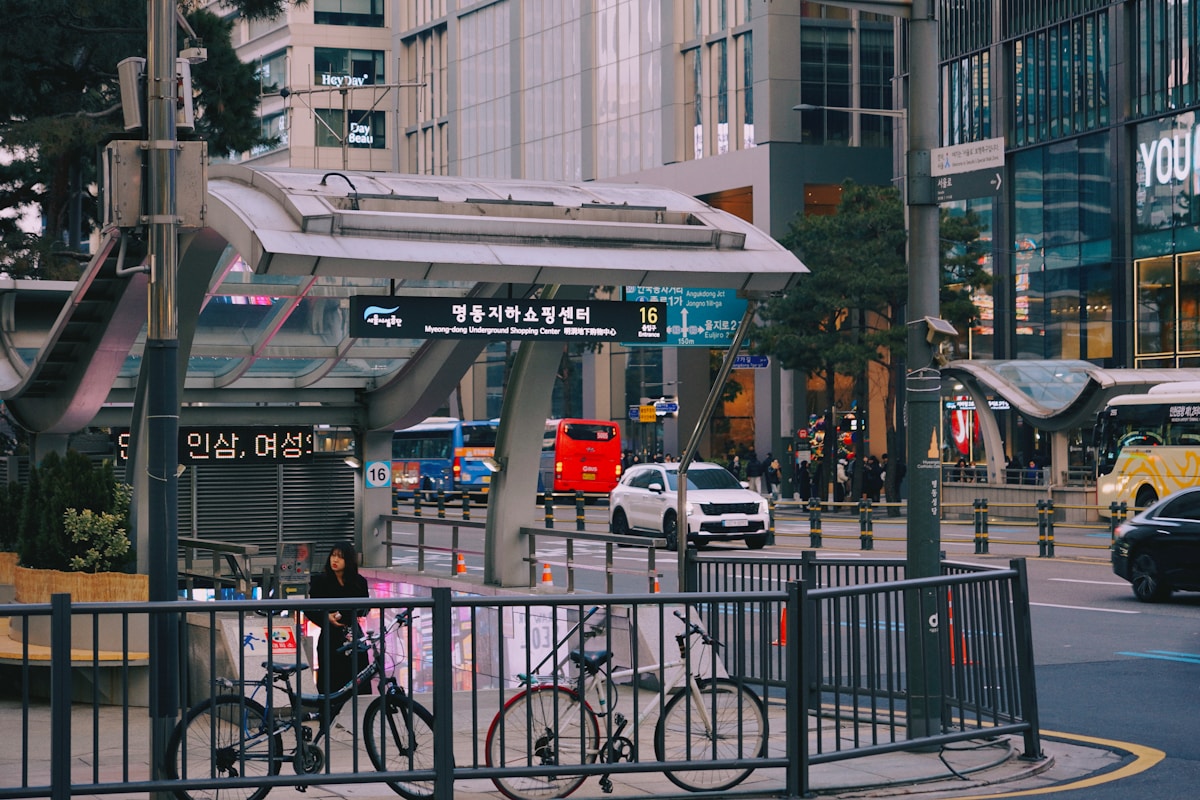
Seoul’s extensive public transportation network offers tourists significant savings with integrated T-money cards that work across subways, buses, and even convenience store purchases.
Visitors can maximize efficiency by planning routes through popular tourist corridors serviced by color-coded subway lines, which connect major attractions while avoiding Seoul’s notorious road traffic.
The affordable Airport Railroad Express (AREX) provides seamless connections between Incheon International Airport and downtown, eliminating the need for costly taxis during the initial arrival and final departure phases of a Korean vacation.
How to Save Money on Transport Costs
Seoul offers tourists significant savings through various discount travel passes, including the T-Money card and Seoul City Pass, which provide fare reductions and transfer discounts across multiple transportation modes.
Budget-conscious travelers should consider purchasing these passes early in their trip, as the accumulated savings on subway and bus fares quickly offset the initial investment.
While public transportation serves most tourist destinations efficiently, specialized tour buses become economical alternatives when visiting outlying attractions like the DMZ or when seeking hop-on-hop-off convenience with English commentary at major landmarks.
1. Discount Travel Passes and Best Ticket Options
When exploring the vibrant metropolis of Seoul, budget-conscious travelers can significantly cut transportation costs by using the city’s various discount travel passes and ticket options—while also enjoying many top free things to do in Seoul. For maximum savings:
- Purchase the T-money card for seamless transfers and 10% fare discounts.
- Consider the Seoul City Pass for unlimited subway/bus travel plus attraction discounts.
- Opt for 1-Day or 7-Day unlimited metro passes during intensive exploration periods.
2. When to Choose a Tour Bus Over Public Transport
While public transportation offers excellent value for budget travelers in Seoul, tour buses present compelling advantages in specific scenarios.
They are always on the list or guide for first-time Seoul visitors seeking hassle-free sightseeing, those with limited time, or during extreme weather conditions.
Tour buses also benefit travelers interested in thorough historical context, as knowledgeable guides illuminate cultural nuances that independent exploration might miss.
Planning a Trip to Seoul (South Korea) With Efficient Transport
Seoul’s extensive transportation network becomes most effective when travelers strategically combine subway lines, buses, and taxis to navigate the sprawling metropolis.
Tourists can optimize their routes with digital tools like Google Maps, while locals often prefer the more detailed South-Korean alternatives Naver Maps and Kakao Maps for precise navigation.
These apps provide real-time updates on schedules, transfer points, and travel times, enabling visitors to efficiently reach the city and choose the best time to spent and visit Seoul, to find out any diverse attractions without wasting precious vacation time.
1. Combining Different Transport Methods for Convenience
Mastering Seoul’s vast urban landscape often requires strategic combinations of transportation options rather than relying on a single method.
Experienced travelers seamlessly integrate:
- Subway for long distances, switching to buses for reaching hillside neighborhoods
- T-money card transfers between trains and taxis during late hours
- Walking through historic districts, then grabbing city bikes across Han River parks
2. Using Google Maps, Naver Maps, and Kakao Maps for Directions
Maneuvering an unfamiliar metropolis becomes markedly easier when armed with the right digital tools, particularly in a city as extensive and intricate as Seoul.
While Google Maps offers reliable English navigation, locals prefer Naver and Kakao Maps for their precision with Korean addresses and real-time traffic updates.
These apps provide thorough transit directions, walking routes, and estimated travel times across Seoul’s transportation network.
Wrapping Up
Seoul’s transportation network stands as a demonstration of thoughtful urban design, offering visitors a kaleidoscope of travel options that blend efficiency with accessibility.
From the pristine subway system to color-coded buses and technology-enhanced taxi services, traversing this dynamic metropolis becomes an experience rather than a chore.
By embracing the T-Money card and digital navigation tools, travelers access the city’s full potential, connecting seamlessly to Seoul’s cultural tapestry and lively neighborhoods.

